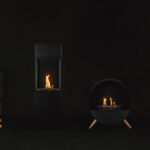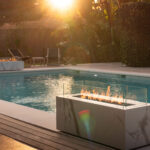Are bio ethanol fireplaces safe?
Bio fireplaces are the alternative to wood-burning stoves and gas fireplaces. This solution has given the opportunity to have a fireplace without a classic chimney, flue or pipe installation. It is a solution for all those who want to have a fireplace while living in a block of flats.
Among bioethanol fireplaces, we distinguish between manual and automatic devices. Manual ethanol fireplaces are infamous. In fact, the simple and dangerous construction leaves much to be desired. Some manual fireplaces are mistakenly called automatic fireplaces, which are actually very different from them. Fortunately, the flaws in their design have been recognised and engineers have found the perfect solution – automatic bio-ethanol fireplaces with BEV™ (Burning Ethanol Vapours) technology, which provides maximum safety and comfort and is also ideal as a supplementary source of heat.
How do manual bioethanol fireplaces work?
The era of bio-fireplaces started with manual fireplaces. To understand how they work and why they are not the best choice, we need to know how they are built. In manual devices, you ignite the surface of liquid fuel that is contained in the open tank. The temperature rises uncontrollably and when it exceeds 80°C the fire is high and uncontrolled and it is difficult to close the hearth of the burning biofuel. The bioethanol starts to boil, and splashes and an unpleasant smell can come from the fireplace. Harmful substances are produced as the fire has no sufficient access to oxygen.

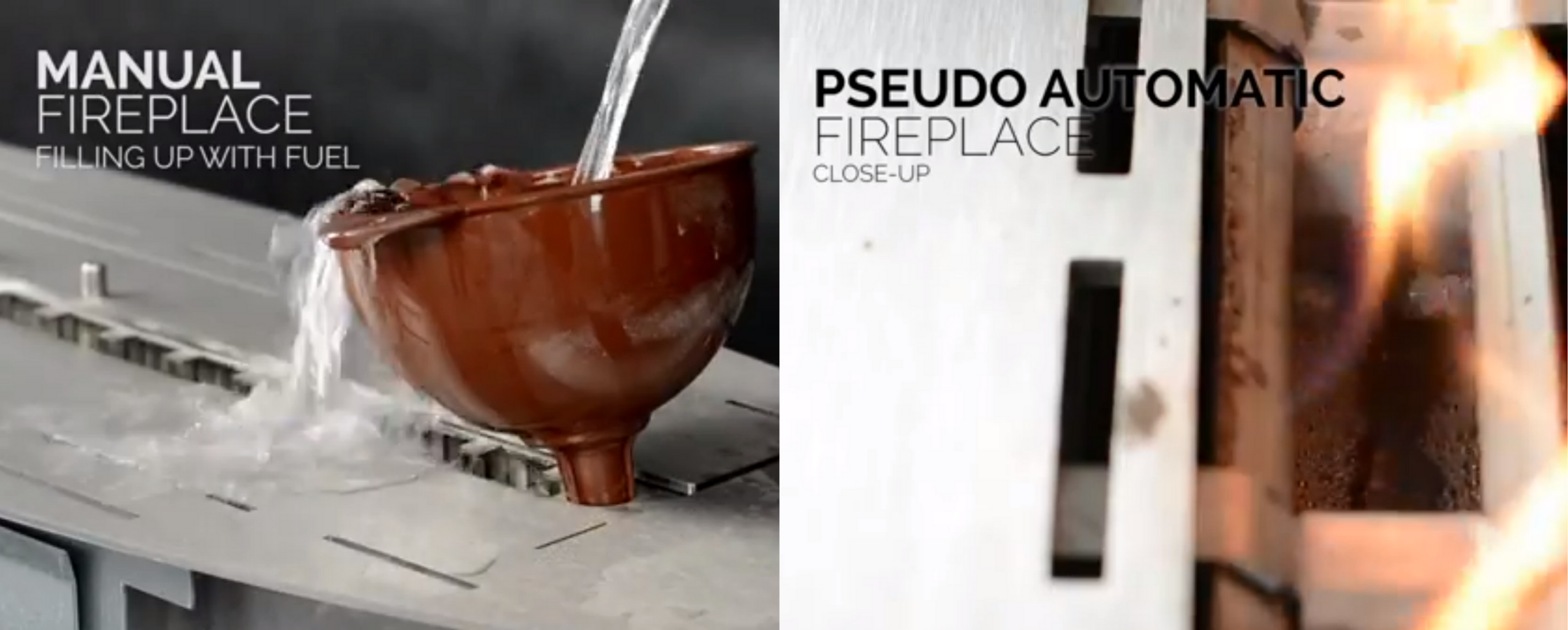
What are the disadvantages of manual fireplaces?
Both the filling of the fuel and the lighting of the fireplace has to be done manually, which is a huge risk as it is very easy to make a fatal mistake.
Refuelling is not automated and we do not know how much bioethanol fuel is in the tank at any given moment. This is one of the most dangerous situations – you have to add biofuel slowly because it can overflow, which can lead to a fire.
Additionally, if there are bioethanol residues in the tank, the flame becomes practically invisible. If we unknowingly decide to add fuel then the fireplace may explode.
How manual fireplaces are built?
Their construction can be compared to a fuel trough. It’s just an open tank with no advanced solutions. Manual bio-fireplaces have no sensors to control the whole process, so undesirable effects can be multiplied. Due to the lack of detectors to control the temperature the ethanol in the tank starts to boil and the entire chamber as well as the safety glass gets very hot. As the walls of the fuel tank overheat the top plate may deform. The absence of spill sensors is equally dangerous – if you move the manual bio-fireplace the fuel will spill over the room and may cause a fire. Under no circumstances should you leave a burning bio-fireplace unattended.
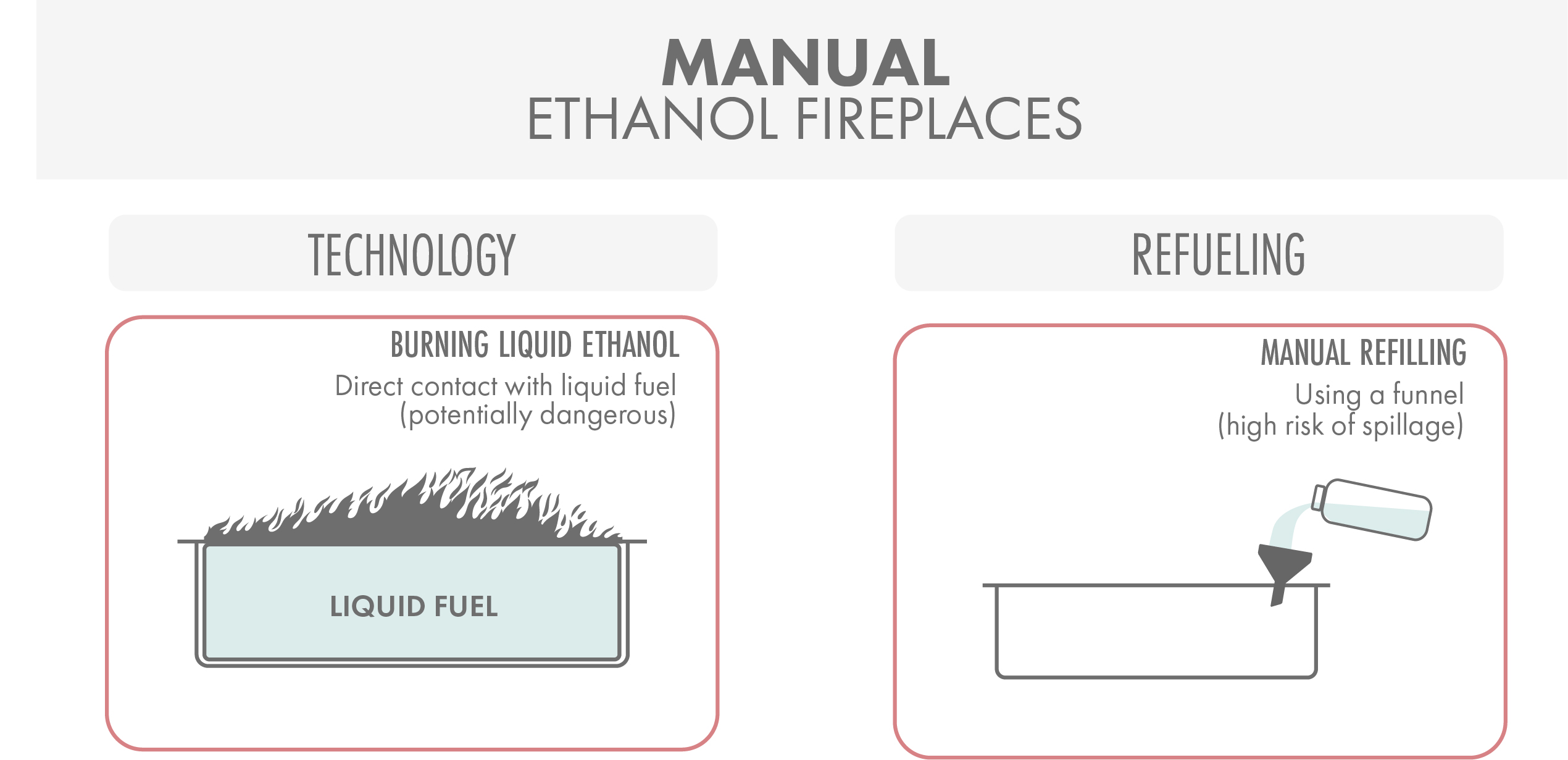
Accidents with ethanol fireplace?
Straffordshire Fire Brigade is advising against the use of manual fireplaces for its residents.
Following a number of dangerous situations, representatives from Staffordshire Fire Brigade have issued a notice advising against the use of these types of fireplaces to residents in the region. This anti-advertising could seriously affect sales of bio-fireplaces, even though there are perfectly safe automatic models on offer. Tragic incidents have ALWAYS been linked to the use of manual fireplaces where the fire is in direct contact with the fuel.
If you have a manual bioethanol fireplace, it is necessary to take all safety measures into account, otherwise, it may cause a fire hazard.
What are the advantages of using manual fireplaces?
What are the advantages of using a manual fireplace? It seems that the only advantages are their relatively low price, the ease of installing the bio-fireplace and the arrangement.
What is an automatic ethanol fireplace?
A modern and safe solution is automatic bioethanol fireplaces with BEV™ technology – Burning Ethanol Vapours. The whole process is automated. The fireplace takes the required amount of fuel from the tank and a pump transports it to the combustion chamber. Bioethanol is slowly heated to a temperature where it turns into vapour. These are distributed along the length of the fireplace and fire is created.
The flame is formed from ethanol vapour and the fire does not come into direct contact with the liquid fuel. A microprocessor communicates with the sensors and is able to react if any abnormality is detected, for example, fuel spillage, earthquake, etc. In case of emergency, it stops the fire immediately. The user will be informed of the malfunction through an audible signal and information in the app. They are controlled completely remotely and therefore reduce the risk of use to zero.
Do ethanol fireplaces produce carbon monoxide?
There are no harmful substances such as carbon monoxide and other impurities produced. The automatic bio-fireplace with BEV™ technology ensures a safe combustion process, which is controlled by electronic systems. The products of combustion are carbon dioxide and water vapour. Their amount can be compared to that in the air exhaled by humans. The combustion is complete, as the intensity of the vapour is metered by the device. The carbon dioxide and water vapour produced when burning a fireplace is entirely absorbed in the process of photosynthesis by plants.
How do I fill up the biofuel tank of a bio-fireplace with BEV technology?
A special pump is used to fill the automatic fireplace with BEV ™ technology. When the tank is filled to the maximum capacity, a signal sounds and the pump stops. This prevents spillage of the bioethanol and any failure.
How do I switch on the automatic bio fireplace?
We use the remote control, the mobile app or the smart home system to light the fireplace. In this way, we avoid the risks that we encounter with manual fireplaces – which can be compared to firing up the burners of a gas cooker.
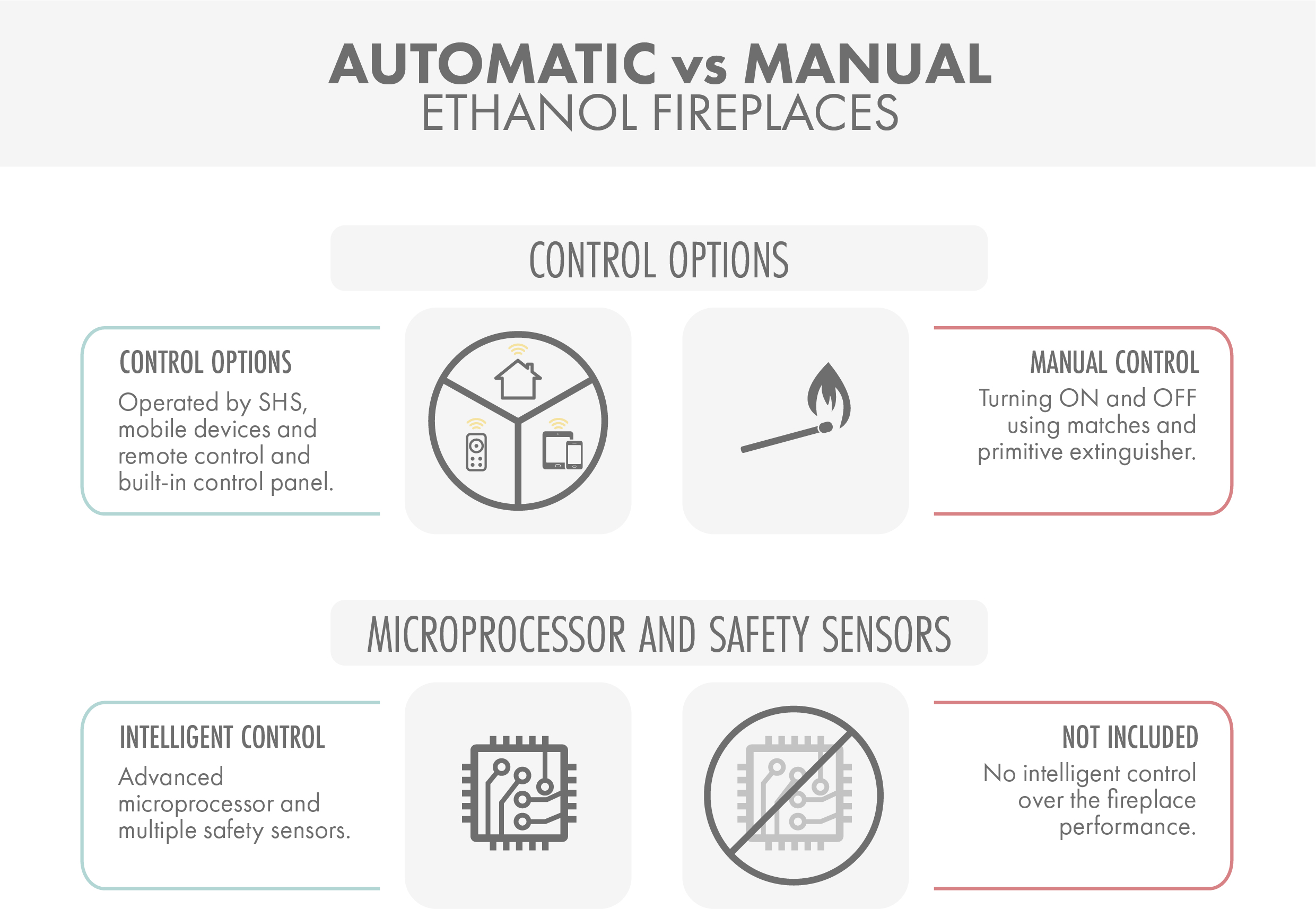
Which ethanol fireplace should you choose?
In conclusion, the only safe type of bioethanol fireplace is an automatic fireplace with BEV technology. Thanks to this solution, you can enjoy a safe, continuous fire with beautiful colours. The installation of an automatic fireplace with BEV™ technology is easy and quick. Some models can be placed in arrangements made of flammable materials such as wood. They can also be installed in places such as hotels, restaurants and even yachts. As a result, this technology is very popular among architects and its proven safety of use is trusted by customers.
The arragement possibilities of automatic bio-fireplaces are endless and prices are competitive.
If you plan to buy a bio-fireplace it is important to remember that the quality of the bioethanol fuel used and the choice of a reliable producer is important.
Taking into account safety, technological advancement, ease of installation (no need for a chimney) and environmental friendliness it is definitely worth choosing an automatic bio-fireplace with BEV™ technology.
Did you find this article interesting?
If you are interested in this topic or want more information, please contact us – we will help you choose the right fireplace for your project and dispel any doubts.


